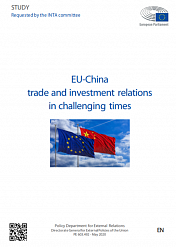These are:
A logistics corridor across Europe and Asia
Connectivity already exists; however, bottlenecks remain and there is the question of Russia. It is possible that cooperation could arrive in the form of matching part of the EU’s ‘Global Gateway’ programme with the BRI routes at the European end. Key here is cooperation, not competition.
A «Silk Road E-Commerce Zone», with more free-trade agreements and investment treaties
Digitisation is required to speed up transit and cross-border issues; and improve customs efficiencies along all routes. Additionally, some of the Bilateral Investment Treaties, Double Tax Agreements and Free Trade Agreements are outdated in terms of new technologies and these will be improved. Additional new agreements may also be signed.
An additional US$47.8 billion financing pledge from Chinese development banks.
China has already committed over US$1.1 trillion to the BRI over the past decade, this adds roughly an additional 5% of that total to the widening BRI scope of investment.
A push for green development.
The BRICS New Development Bank (NDB) has been concentrating on green investments, this together with new energy tech and China’s need to meet its various environmental goals will now be a key feature of how and where China puts its continuing BRI investments.
Pledges on scientific development and artificial intelligence.
Good news for scientific research, Chinese Universities and collaboration with other BRI-affiliated nations. Russia will be a key component part of this.
More cultural and people-to-people exchanges, including a tourism alliance.
The development of a cross-border tourism alliance has been in the wings for some time, and especially with Central Asia and the Middle East. Despite Western rhetoric, Beijing has been encouraging Muslim tourism and sees wealth creation amongst its own Muslim population — an estimated 30 million as key to keeping radicalisation at bay. This may result in China becoming an observer member of the Organization of Islamic Cooperation.
More «clean cooperation» to improve transparency.
China does suffer from negative press, sometimes unfairly so but also as a result of dubious BRI investments made by certain Chinese industries. Exporting cement factories is one example, although Beijing did clamp down on that once the issue became apparent. A refocus on green tech and better monitoring of Chinese ODI to ensure compliance standards are met are likely to be part of this remit.
Efforts to establish Belt and Road Institutions, including a Secretariat.
There is no single BRI office from which to learn of projects. With 152 countries now part of the BRI, this will be a complex institution to set up however would be a welcome information and investment intelligence exchange and make it easier for foreign investors to better understand BRI and BRI connectivity projects they may wish to become involved in.




